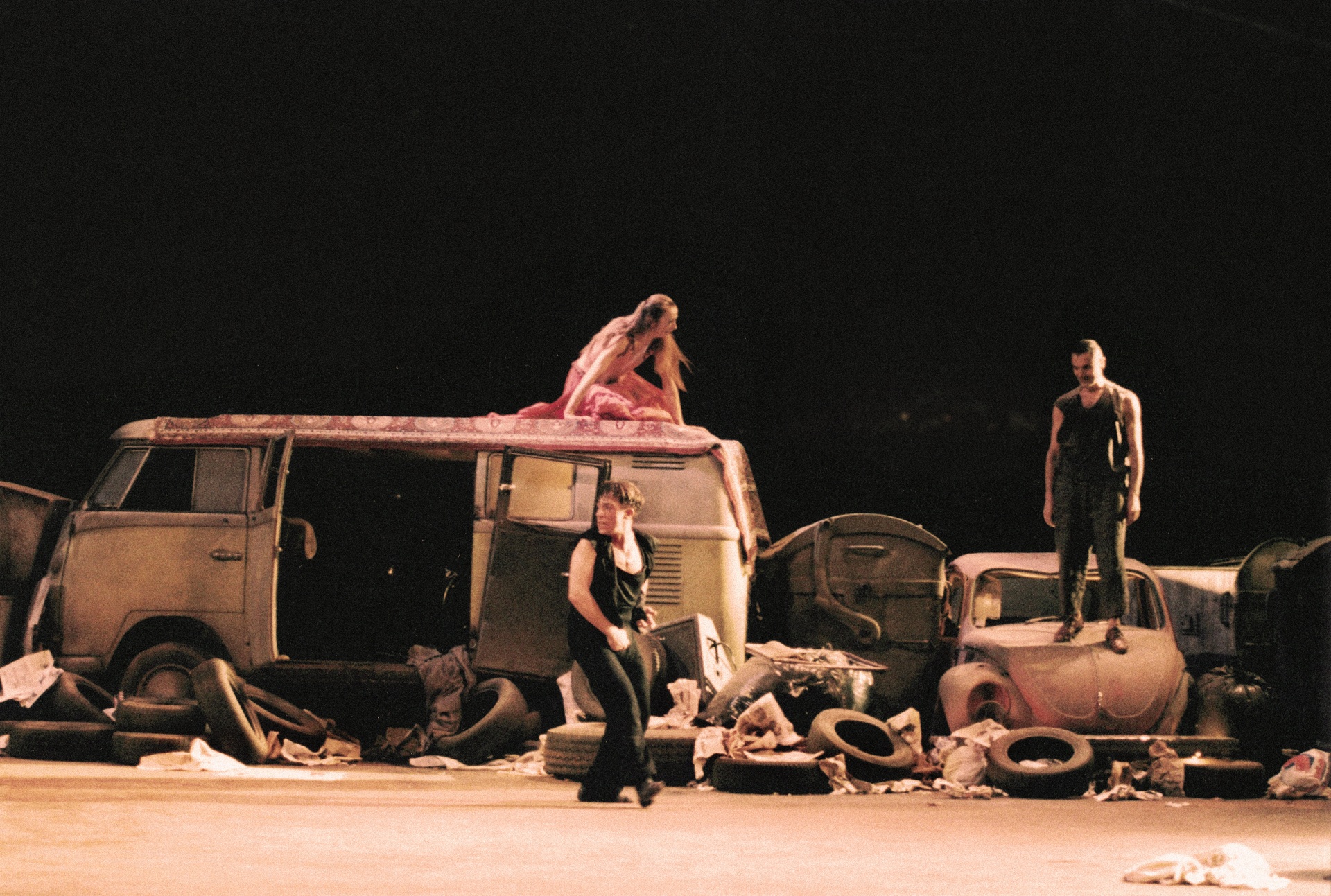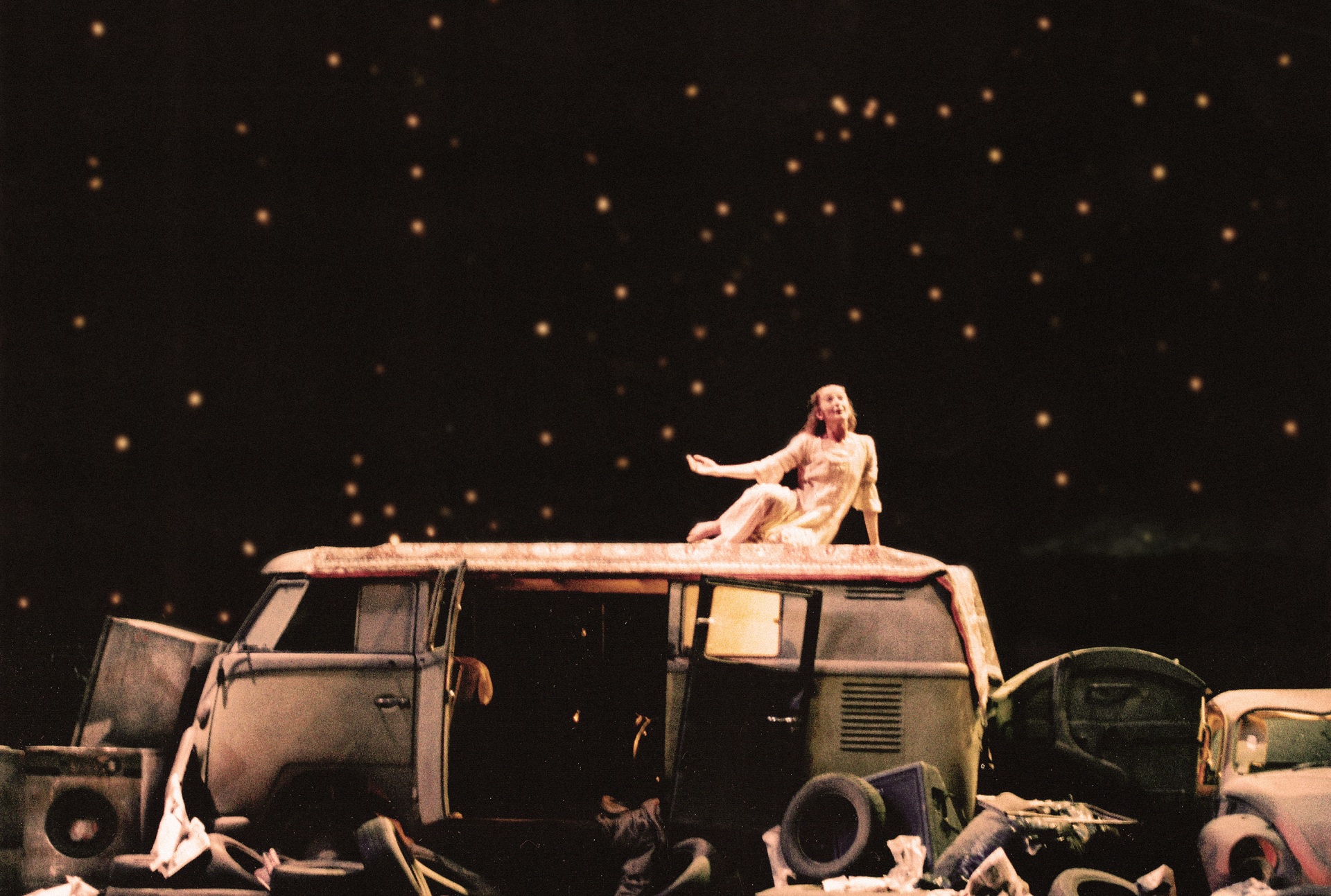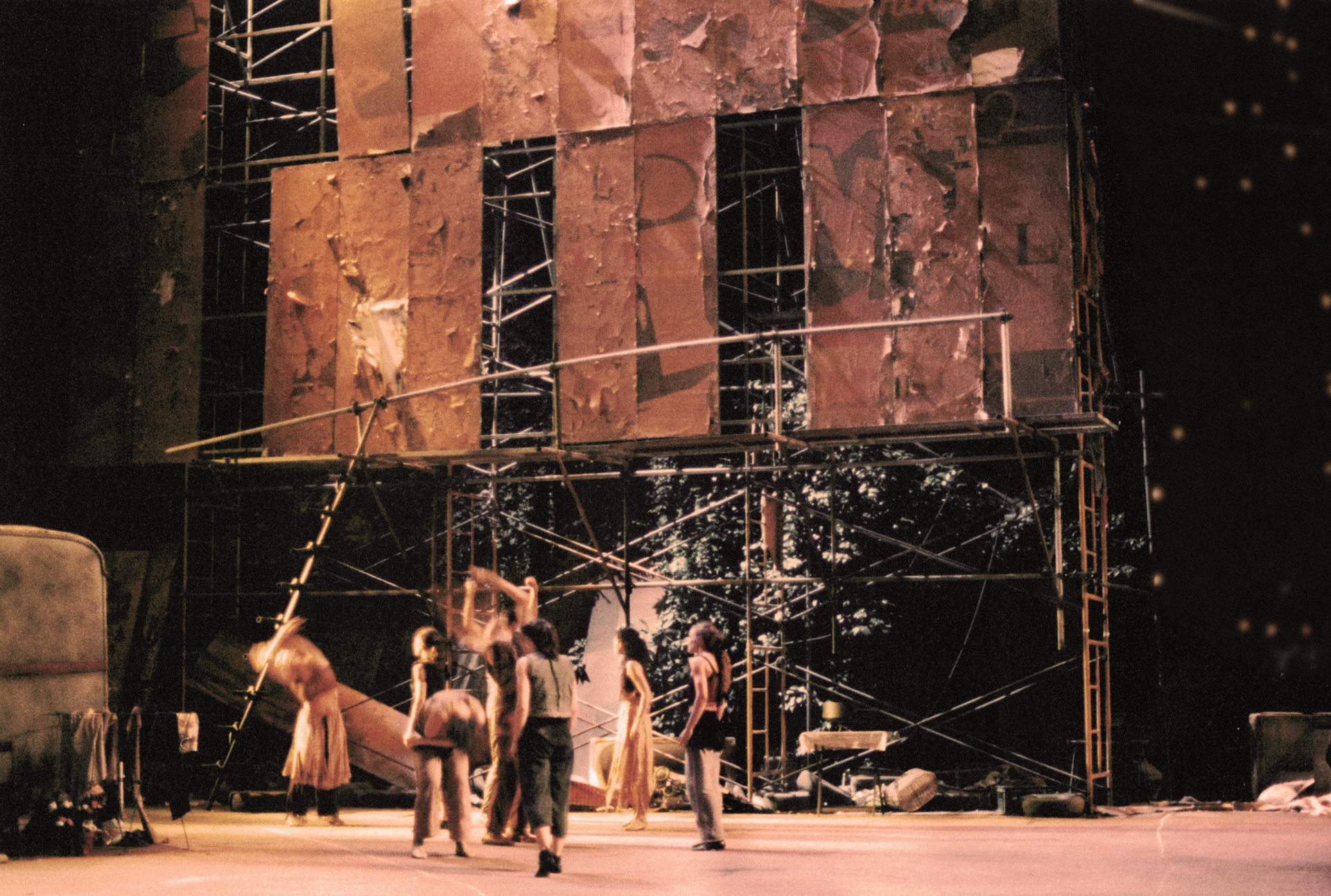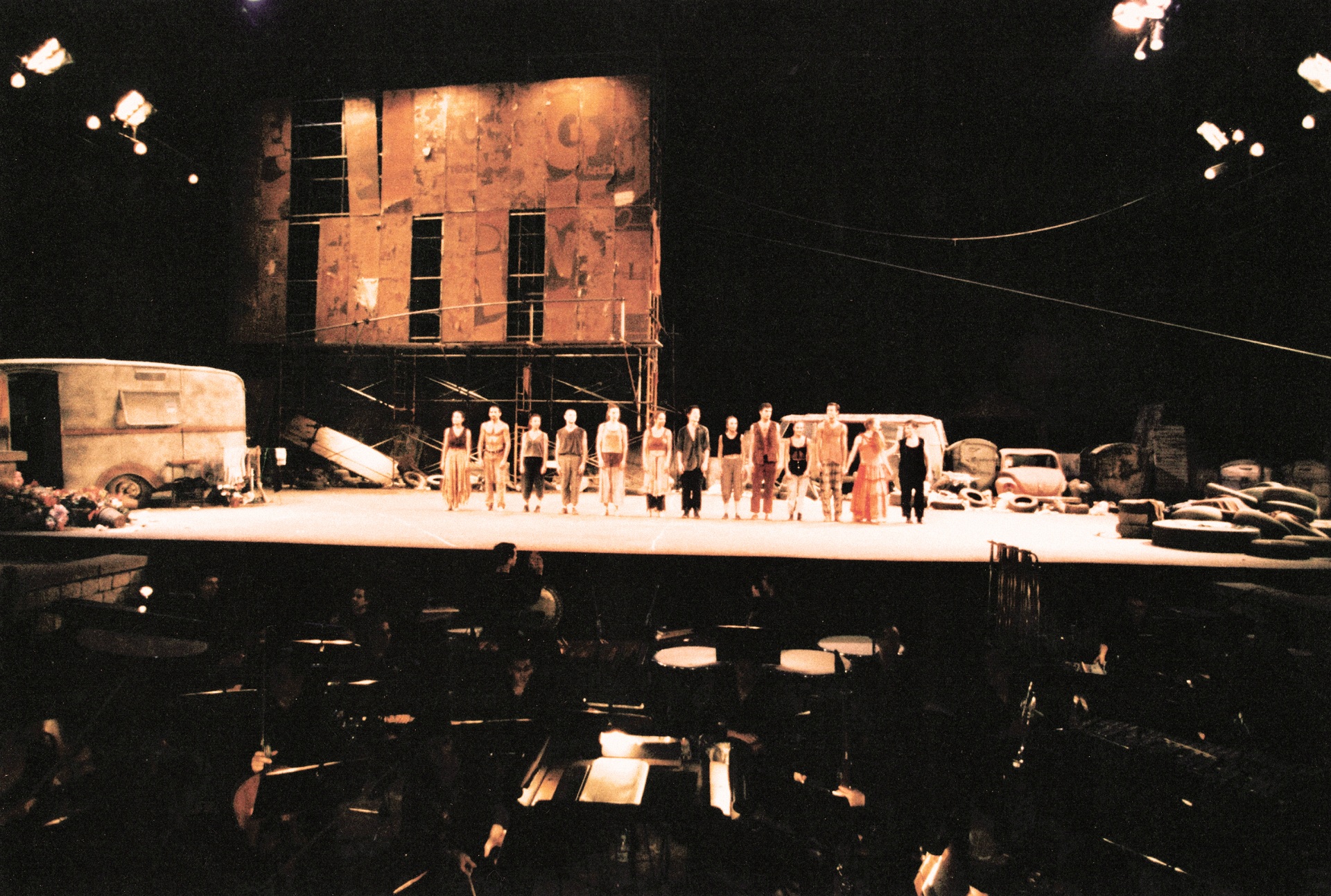Set design for the dance performance presented at the Festival de Teatre Grec and Teatre Poliorama, Barcelona, 1996.
Under the direction of choreographer Ramon Oller, this reinterpretation of the classic ballet Romeo and Juliet with music by Sergei Prokofiev relocated the story to a gypsy camp, offering a contemporary vision of the tragedy.
To bring this universe to life, I designed a set based on three main elements that defined the adaptation: on each side of the stage, an old caravan represented Romeo’s home, and a Volkswagen van stood in for Juliet’s house, both vehicles salvaged from a scrapyard. At the center, Mercury’s castle rose as the intermediary between the lovers. This element was translated into a monumental structure: a large billboard made of scaffolding and steel sheets that, paradoxically, advertised nothing. Its orientation, turned toward a viewpoint different from that of the audience, suggested that everyday life unfolded elsewhere.
The space between these three elements became the core of action, a vacant terrain where the characters interacted. The composition evoked an atmosphere oscillating between the magical and the decadent, reflecting the moral decay that permeates the tragedy. The scene was completed with wheels, rubble, and garbage bins, elements with which the dancers interacted during the characters’ confrontations.
To unify the set, I applied a layer of rust-colored paint to counterbalance the naturalism of the objects. The result was a romantic yet unsettling world, like the shadow of a lost splendor, an echo of beauty and destruction resonating in every movement.
-
Awards: 1998 National Dance Award for Stage Design
Institutional sponsor: Metros Companyia de Dansa; Gran Teatre del Liceu
Location: Teatre Grec, Barcelona; Teatre Poliorama, Barcelona
© Photography: Ros Ribas







